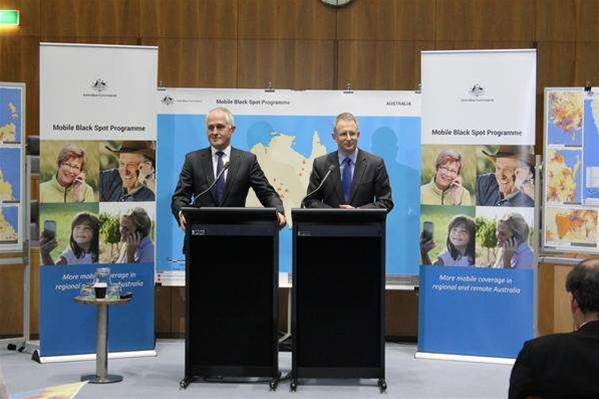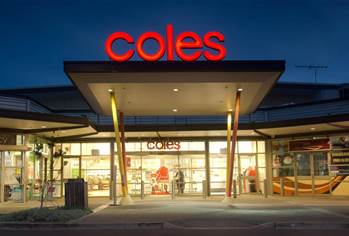Australia’s second largest mobile network provider Optus has failed to secure any funding to build new mobile towers in regional blackspots under a $385 million infrastructure program co-funded by the Commonwealth, states and telcos.

Overall, the program will see the construction of 499 new base stations, providing 68,600 square kilometres of additional mobile coverage.
The Commonwealth invited competitive bids from the three mobile network providers - Telstra, Optus and Vodafone - to secure a slice of $100 million it would contribute to building new base stations across the states and territories.
The big winner from the bidding process is Telstra, which is set to build 429 of the funded base stations, plus 250 mini 4G base stations in small towns across Australia.
It will contibute $165 million of its own money to the build over three years.
Telstra will negotiate the exact locations of the mini base stations with the federal government, ahead of a rollout in the second half of this year.
The remainder of the contract goes to Vodafone, which will build 70 base stations across New South Wales, Tasmania, Queensland, Western Australia, plus one in Victoria which partnered with Telstra for its bid.
Vodafone will spend $20 million of its own money on the build.
While Optus participated in the process, all of its bids to build base stations failed.
"Whilst unsuccessful on this round, we continue to work with the government on ways to improve communications services in regional Australia – including infrastructure sharing opportunities," the telco said in a statement.
It described regional telecommunications as a problem "that can’t be fixed in a day" but pledged to continue to work with the government despite the failure of all its bids.
"We are working with the Government on this, and believe we will have future opportunities to contribute more directly," Optus said.
The federal government also announced an additional $60 million for a second round of the mobile blackspot program, with funding available over a two year period from July 2016.
State-by-state funding
NSW and Victoria will house the bulk of the new base stations under today’s allocation.
Fletcher revealed that the state-by-state breakdown would be as follows:
- NSW - 144
- Victoria - 110
- Queensland - 68
- Western Australia - 130
- South Australia - 11
- Tasmania - 31
- Northern Territory - 5
No new infrastructure was announced for the comparatively small ACT.
Victoria was the first state to publicly welcome the announcement.
It will take a slice of $86 million from the $385 million bucket of funding.
The Victorian state government has been particularly vocal in its campaign for funding under the blackspot scheme, after poor cellular coverage was blamed for inhibiting emergency services and evacuation attempts during the disastrous Black Saturday bushfires.
It entered a joint bid for a slice of the $100 million Commonwealth pool with Telstra, and put forward its own contribution of $21 million in the hope of maximising the total towers that the telco would be able to make commercially viable within its borders.
"We have worked closely with Emergency Management Victoria to ensure the new towers will provide coverage and enable easier access to emergency information specifically in bushfire-prone areas,” said Victorian Emergency Services Minister Jane Garrett.
Her colleague, Minister for the Regions Jaala Pulford called the allocations a “game changer” for the state’s rural areas, and claimed the new base towers would deliver mobile coverage to 12,000 households that had previously struggled with cellular access.
Queensland’s 68 towers will cost $53.85 million.
Despite not receiving an allocation on the scale of NSW or Victoria, Science and Innovation Minister Leeanne Enoch called the announcement “a great outcome".
“It was a great concern to myself and the Premier earlier this year when Cyclone Marcia struck that some residents couldn’t receive evacuation alerts or communicate properly with each other and the authorities. This program will help address those issues,” she said.
Tasmania's 31 towers will fix 113 identified blackspots across the state said IT and Innovation Minister Michael Ferguson. The Tasmanian program will cost $21.41 million and builds are split between Telstra and Vodafone.
In WA the build will cost a total of $118.07 million.
NSW contributed $24 million to the bid for base station in the state, WA contributed $32 million, Queensland put forward $10 million and Tasmania added $350,000 to the funding pool, with a combined $1.7 million coming from local governments, community groups and business.
The Mobile Coverage Program was established after a 2011-12 review found poor mobile and broadband coverage was the biggest issue facing regional communities.
The federal government announced in August 2013 it would set up a $100 million fund to kick-start a program of base station building in regional areas.
The main component, the $80 million Mobile Network Extension program, sought to improve mobile coverage in the bush, especially in small towns, disaster-prone areas and along major roads.
Another component, the $20 million Mobile Black Spots program, was designed to improve coverage in communities with unique issues, such as coastal towns with significant seasonal fluctuations in population.
The Coalition stated that it expected carriers bidding in the program to at least match the $100 million funding with $100 million of their own. Telstra and Vodafone will collectively exceed this co-contribution benchmark by $85 million.




.png&h=140&w=231&c=1&s=0)



_page-0001.jpg&w=100&c=1&s=0)

 Digital Leadership Day Queensland
Digital Leadership Day Queensland
 Government Cyber Security Showcase Queensland
Government Cyber Security Showcase Queensland
 Government Innovation Showcase Queensland
Government Innovation Showcase Queensland
 Local Government Focus Day Queensland
Local Government Focus Day Queensland
 Digital As Usual Cybersecurity Roadshow: Brisbane edition
Digital As Usual Cybersecurity Roadshow: Brisbane edition











.jpg&h=140&w=231&c=1&s=0)



